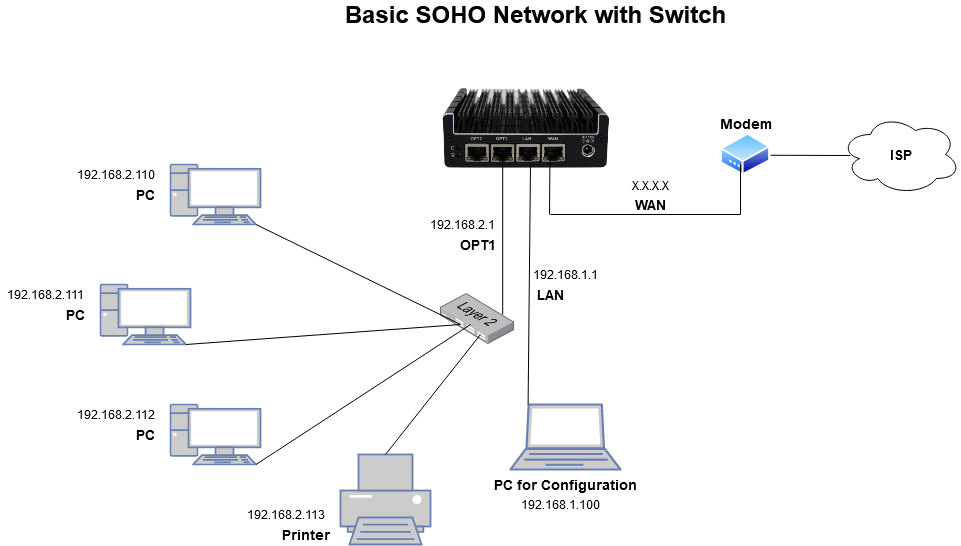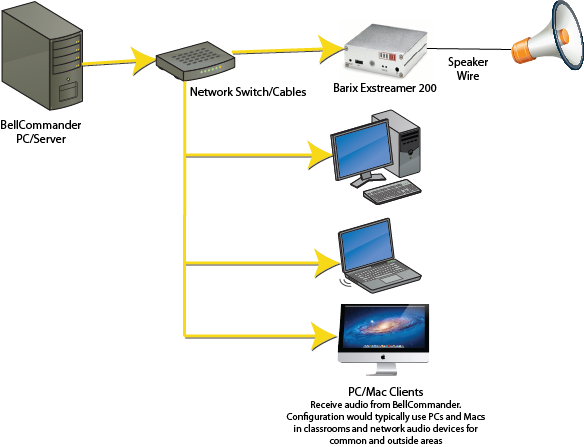

The DHCP server cannot also be a DHCP client, so this just won't work.Įven if using the DHCP server to set its own IP address–and other network configuration attributes–could be made to work, all of the recommendations I see on the Internet suggest that it would be a really terrible idea and that no good administrator would even consider doing such a thing.
#WIRED CLIENT INTERFACE CONFIGURATION MAC#
If the DHCP server must have an IP address to send network configuration information, including an IP address, to itself… Well, that just won't work-sort of the network equivalent of the chicken and egg situation.ĭHCP clients request network configuration using a broadcast on the network, and the server responds to that request using the MAC address of the requesting client. These two hosts are best configured using static setups that don't depend upon external configurations. However, there are two hosts on which I do use static network configuration: My network server–the one that runs the DHCP server–and the Linux host I use for my network/firewall. Most of my network hosts don't need static network configurations and use DHCP. Why I do use interface configuration files? The router's DHCP server provides the network configuration data even if you use the 4-port wired switch on the back of most wireless routers to connect a wired desktop computer. All you need is a DHCP server.įor most networks with a single host, such as in a home office with one or two laptops and a few other devices, the wireless router provided by the ISP contains the DHCP server required to offer a complete set of configuration data to all your devices. This makes installing new hosts on a network easy and simple. By default, all Fedora and Red Hat hosts obtain their network configuration from a DHCP server. NetworkManager does not need local configuration files when DHCP provides the network configuration information.

The idea is that using DHCP to provide all of the network configuration data needed by most of the network hosts simplifies my job and allows me to be the "Lazy SysAdmin." Suppose something changes on the network, such as the IP address to the default gateway or the primary name server? Changing that information in a single location, the nf file, is much less work than changing a static configuration on ten or a thousand hosts. I impose simplicity on my network by using tools that provide central management for most of the connected hosts–all except for hosts that work as routers and provide server services. The bottom line is that all the configuration data necessary for each host is stored in the DHCP configuration file, /etc/dhcp/nf, where it is centrally managed. This allows centralized configuration and management of a few computers up to hundreds or even thousands of systems. I don't use interface configuration files on my network mostly because each host is dynamically configured at boot time using the Dynamic Host Configuration Protocol (DHCP) server. Why I don't use interface configuration files? However, this discussion is about the logical structure of the network. This is not just about the physical design and layout of the network components and wiring, although the best, most elegant, and easiest networks to work on are well laid out physically and look good. I won't bore you with all the details, but there are some things to consider when designing–or redesigning–a network.Īs a "Lazy SysAdmin," I like to "Find the Simplicity"–yes, those are two of the tenets–and create an elegant network design. I even wrote a book, The Linux Philosophy for SysAdmins, which has tenets that apply to the design and structure of computers, operating systems, and networks.

Our latest Linux articles My network philosophy


 0 kommentar(er)
0 kommentar(er)
